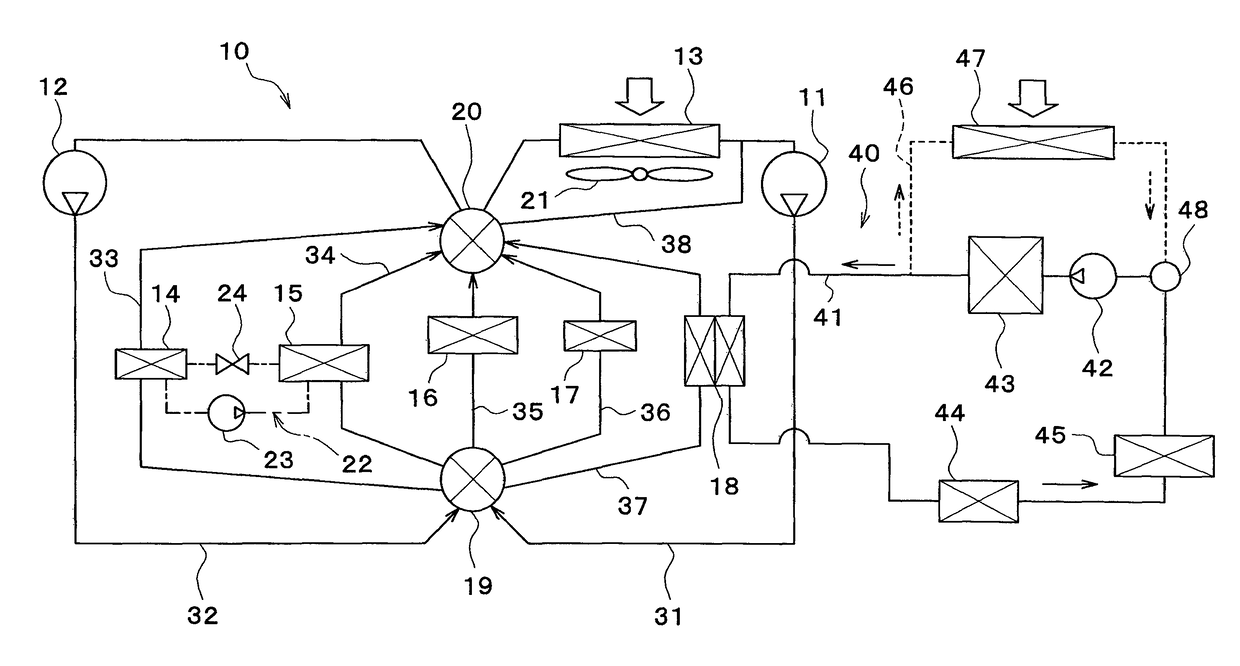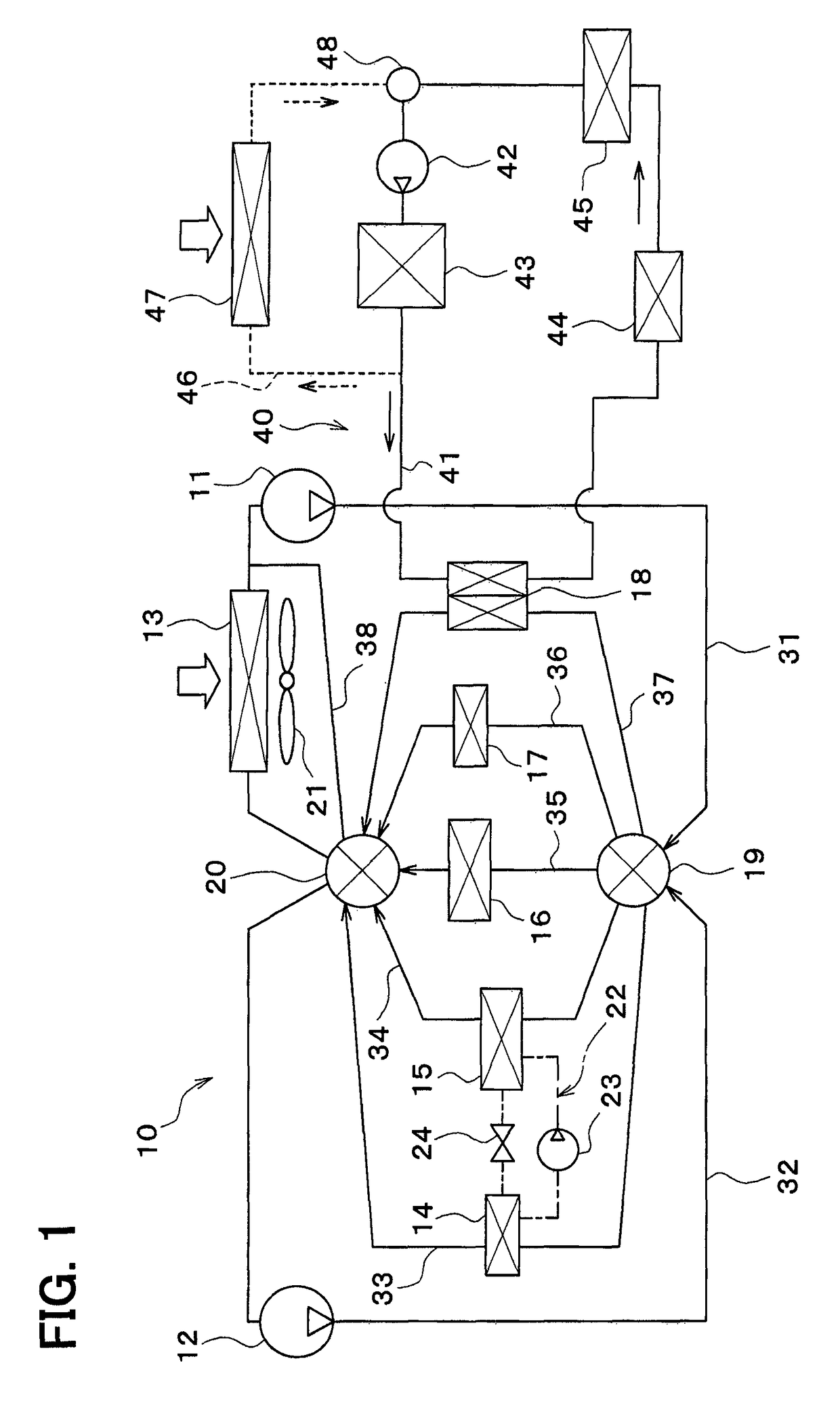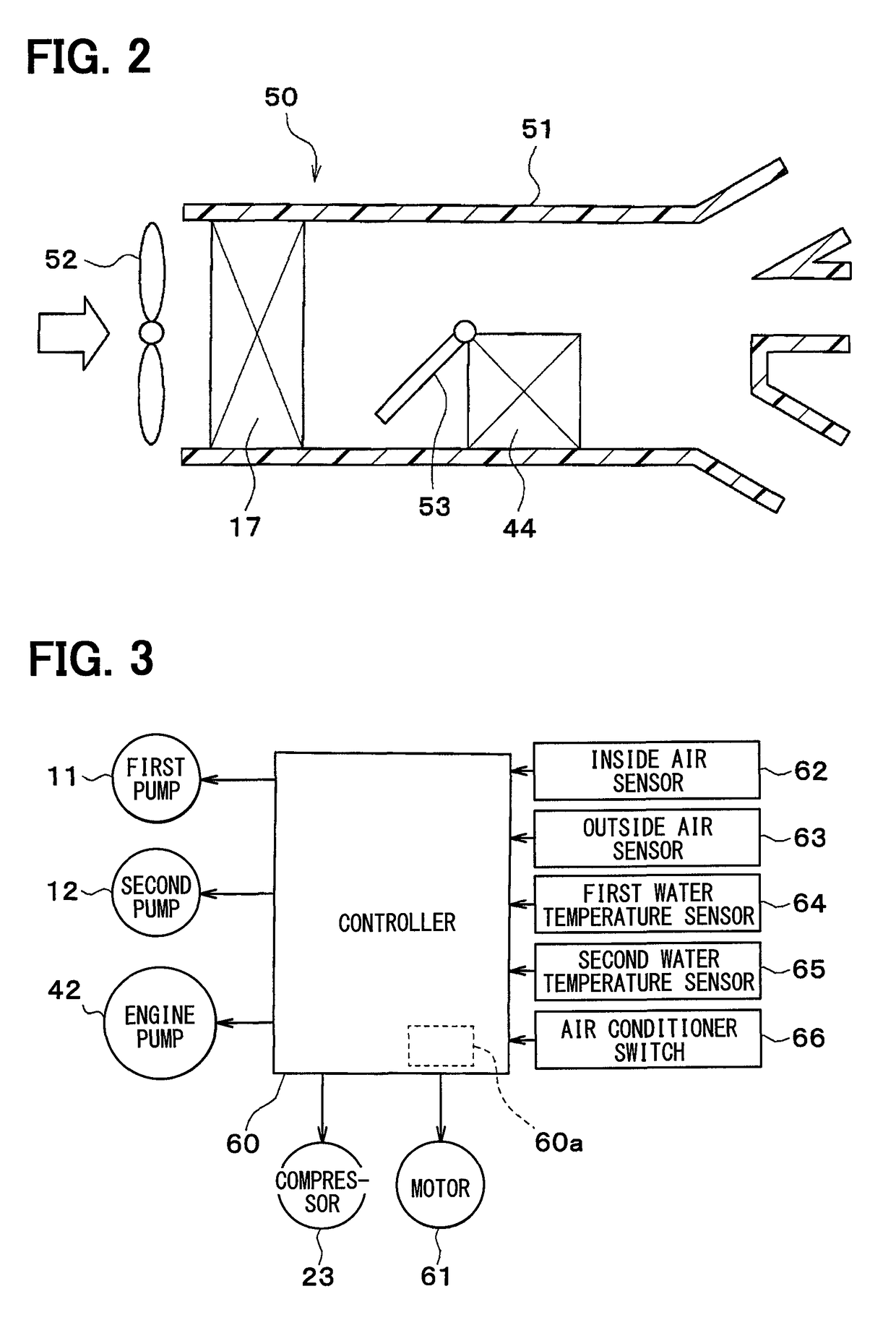Thermal management system for vehicles
a technology for managing systems and vehicles, applied in the direction of machines/engines, mechanical equipment, transportation and packaging, etc., can solve the problems of complicated circuit configuration, complicated structure, and complicated circuit configuration
- Summary
- Abstract
- Description
- Claims
- Application Information
AI Technical Summary
Benefits of technology
Problems solved by technology
Method used
Image
Examples
first embodiment
(First Embodiment)
[0042]In the following, a first embodiment of the present disclosure will be described based on FIGS. 1 to 9. A vehicle thermal management system 10 shown in FIG. 1 is used to adjust the temperature of various devices mounted on a vehicle or an interior of the vehicle to an appropriate level.
[0043]In this embodiment, the thermal management system 10 is applied to a hybrid vehicle that can obtain the driving force for traveling from both an engine (internal combustion engine) and an electric motor for traveling.
[0044]The hybrid vehicle of this embodiment is configured as a plug-in hybrid vehicle that can charge the battery (vehicle-mounted battery) mounted on the vehicle, with power supplied from an external power source (commercial power source) during stopping of the vehicle. For example, a lithium ion battery can be used as the battery.
[0045]A driving force output from an engine is used not only for traveling of the vehicle, but also for operating a generator. Po...
second embodiment
(Second Embodiment)
[0174]In a second embodiment of the present disclosure, as shown in FIG. 10, instead of the intake air cooler 16, a battery cooler 70 and an inverter motor cooler 71 are provided with respect to the arrangement of the above-mentioned first embodiment.
[0175]The battery cooler 70 has a flow passage for coolant, and cools the battery by dissipating the heat from the battery into the coolant. The battery preferably has its temperature maintained in a range of about 10 to 40° C. for the purpose of preventing the reduction in output and charging efficiency, the degradation thereof, and the like.
[0176]The inverter motor cooler 71 has a flow passage for coolant, and cools an inverter and / or the traveling electric motor by applying the heat from the inverter and / or the traveling electric motor to the coolant. The inverter is a power converter that converts a direct-current (DC) power supplied from the battery to an alternating-current (AC) voltage to output the AC voltage ...
third embodiment
(Third Embodiment)
[0302]In the third embodiment, as shown in FIG. 16, with respect to the arrangement of the first embodiment, the arrangement of the radiator 13, the coolant cooler 14, and the coolant heater 15 is modified, and the battery cooler 70, the inverter motor cooler 71, an engine bypass flow path 80, an engine sub-pump 81, and a three-way valve 82 are added.
[0303]The radiator 13 is disposed in a radiator flow path 83. The coolant cooler 14 is disposed on the coolant discharge side of the second pump 12 in the second-pump flow path 32. The coolant heater 15 is disposed on the coolant discharge side of the first pump 11 in the first-pump flow path 31.
[0304]The battery cooler 70 is disposed in the battery cooler flow path 72. The inverter motor cooler 71 is disposed on the downstream side of the coolant flow of the battery cooler 70 in the battery cooler flow path 72.
[0305]The engine bypass flow path 80 is a flow path that allows the engine coolant flowing out of the coolant...
PUM
 Login to View More
Login to View More Abstract
Description
Claims
Application Information
 Login to View More
Login to View More - Generate Ideas
- Intellectual Property
- Life Sciences
- Materials
- Tech Scout
- Unparalleled Data Quality
- Higher Quality Content
- 60% Fewer Hallucinations
Browse by: Latest US Patents, China's latest patents, Technical Efficacy Thesaurus, Application Domain, Technology Topic, Popular Technical Reports.
© 2025 PatSnap. All rights reserved.Legal|Privacy policy|Modern Slavery Act Transparency Statement|Sitemap|About US| Contact US: help@patsnap.com



